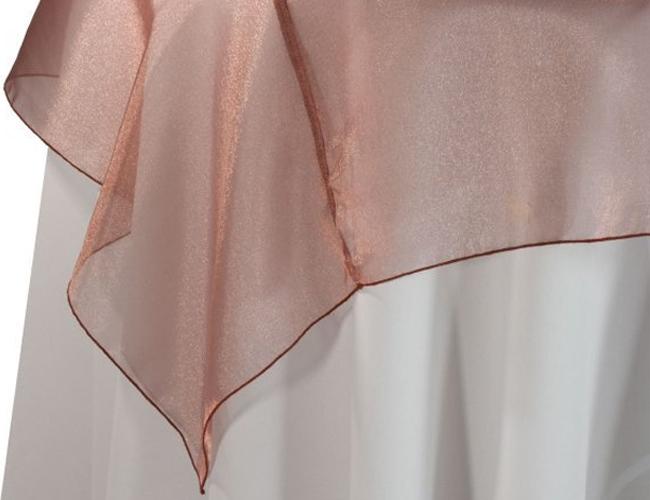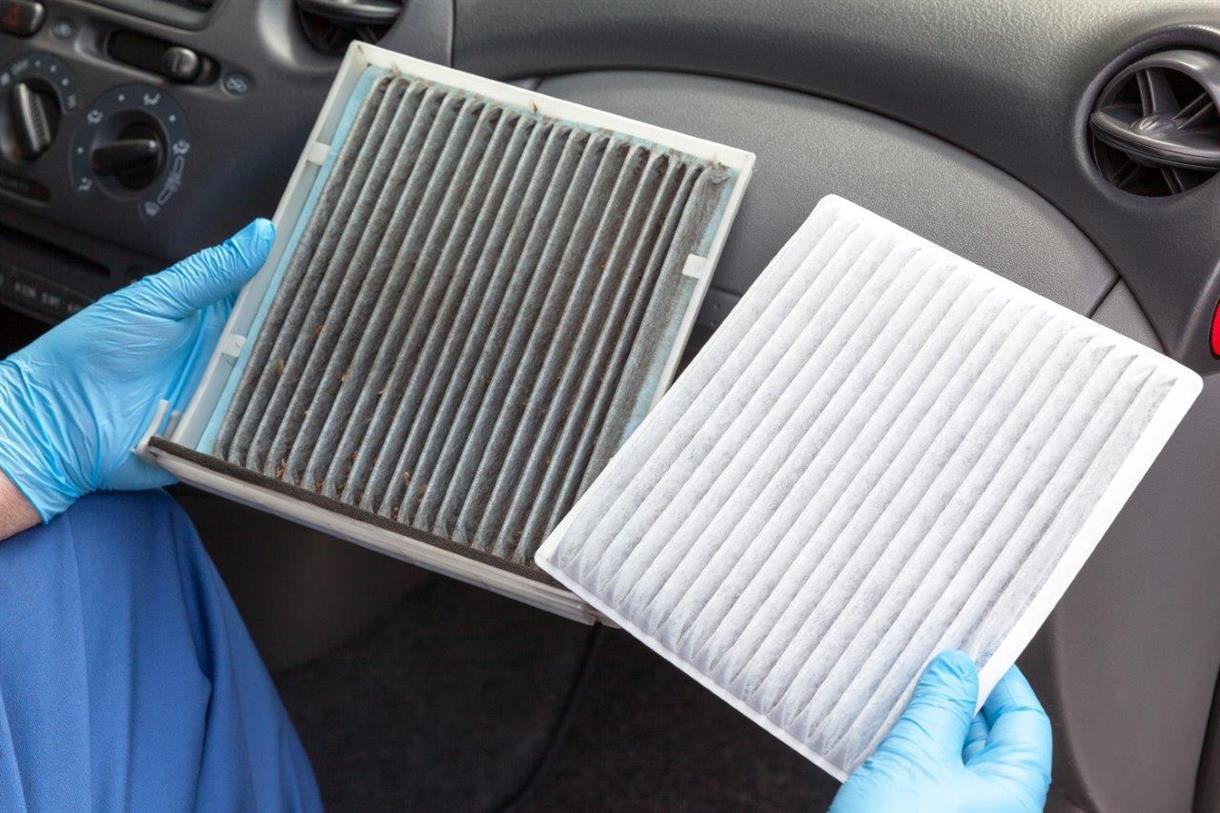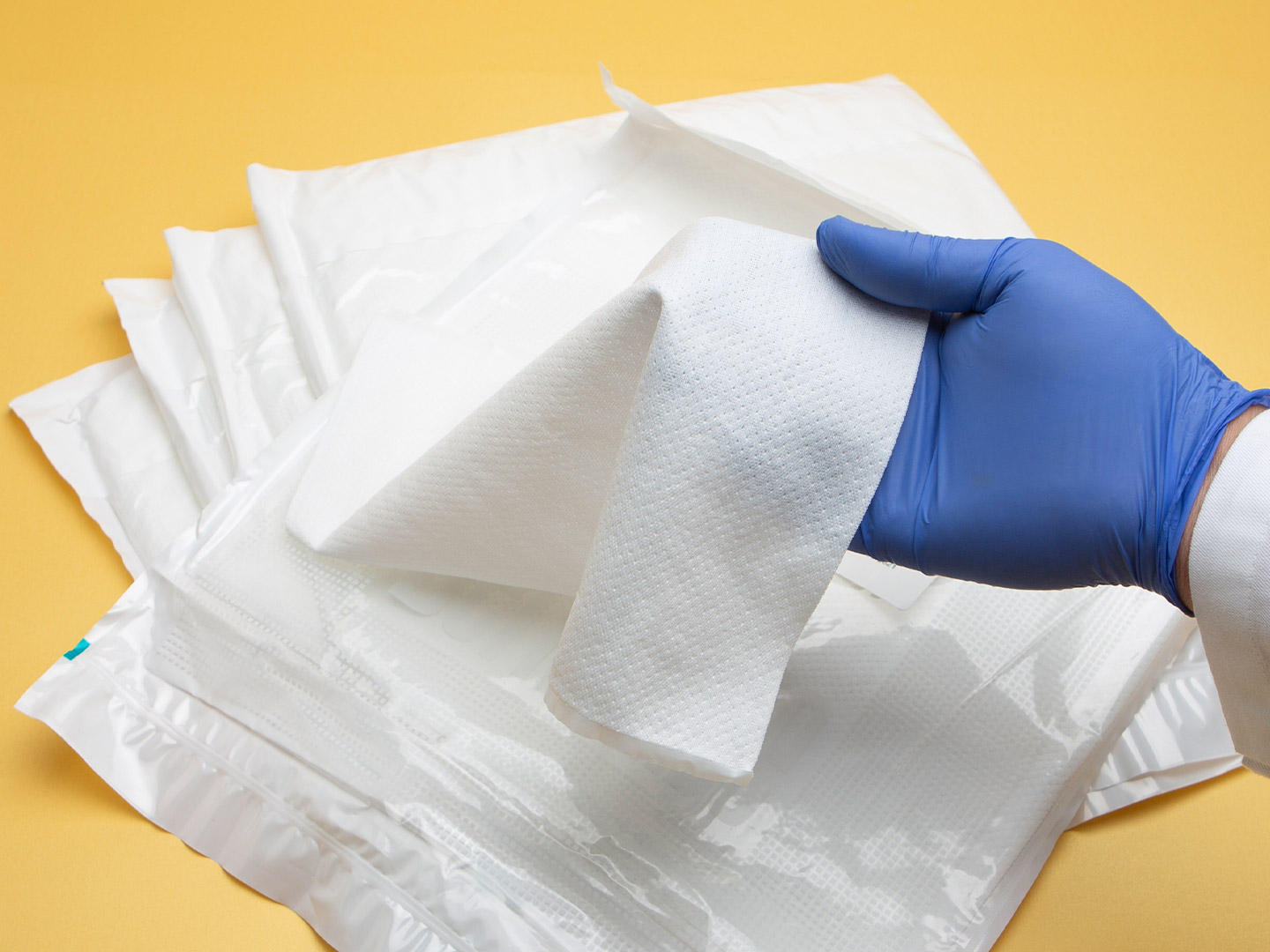
Organza fabric is a light gauze with a transparent or translucent texture, mostly covered with satin or silk. Organza is used chiefly as the main raw material for wedding dresses designed by the French. Plain, transparent, brightly colored after dyeing, and light in texture, like natural silk products.
Organza is a kind of hairy monofilament prepared by processing nylon or polyester mother silk by adding elasticity and false twist and then splitting the silk. Organza is mostly used to cover the top of satin or silk and is often used as a fashion fabric in Europe and the United States. Because of the texture of organza, it is very suitable for the production of wedding dresses, gowns, performance clothes, sarongs, etc. It can also be used together with other fabrics for the production of curtains, fabrics, etc. It looks very fairy.
Organza fabric is more three-dimensional, and will not wrinkle, the skirt is also the effect of puffy. Light and beautiful organza, designers also intend to continue its beauty. Its characteristics as its beautiful name and translucent effect have a hidden feeling, superimposed on other materials of clothing, and have the magic of instantly enhancing the temperament so that you have been beautiful from spring to autumn.
The weaving process for organza is very complicated and precise and, as a result, most organza is still woven by hand. It can be made by machine, but machine-made organza is compromised in quality.
1. Twisting the yarn. After the filament fibers—long, continuous strands of either silk or synthetic material—are produced, two single fibers are twisted tightly in opposite directions to form the yarn.
2. Treating with acid. Before the yarns are woven into a fabric, they are combed and treated with acid. This increases the material’s stiffness, an important quality of organza. Sometimes, synthetic fibers don’t need to be treated this way, as they are often naturally stiff.
3. Weaving. The yarns are woven together using the plain weave method, where the warp and weft threads are woven over and under each other in an equal ratio forming a criss-cross pattern.
(source: https://www.masterclass.com/articles/what-is-organza-fabric)
Organza is generally made of polyester monofilament, mainly divided into silk and chemical fiber organza. Real silk organza has a strong sense of shape and is often used for wedding dresses, which usually do not stick to the skin, but imitation silk organza will stick to the skin. Besides making wedding dresses, it is also used for curtain fabric and performance wear.
Organza is a common fabric in the formal clothing field, but it also has many uses in home design and clothing.
1. Evening wear.
Organza is often layered over more opaque fabrics, such as satin or silk, to create extra dimension and shine for the evening and ball gowns. Because the fabric is sheer, designers can use many layers of sheer, stiff yarn to create sculptural dimension. Organza is also used as a covering for shawls or dresses.
2. Bridal gowns.
Organza is used for bridal gowns, including wedding dresses and bridesmaid dresses. The shiny, smooth material creates a soft, full silhouette due to its stiff drop and structure. This fabric is also often used for bridal veils.
3. Home decoration.
Organza is a very decorative fabric, often used for sheer curtains and tablecloths. It can also be used for event decorations, such as seats, hallways, and wedding arches.
4. Bag.
Organza bags are popular in small drawstring bags, used to carry earrings, necklaces, and other accessories.
5. Costume.
Organza in stage costumes catch the way of stage lighting, organza is very popular in stage costumes, especially tutus and skirts.
Organza fabric has many unique properties, including.
1. Transparency
Organza is transparent or translucent and creates many small holes when knitted, meaning the more holes per inch, the better the quality of the tulle.
2. Thinness
Organza is a kind of woolen monofilament prepared by stretching nylon or polyester master yarn and then splitting it, so it is very thin.
3. Texture
Organza fabric clothes are very smooth, appearing light and airy, and very upscale, with texture and light. Silk also has benefits for the human body, such as UV protection, moisture absorption, etc.
4. Hardness
Organza is hard, the clothing is easy to fold after the crease is also very difficult to recover. Ordinary organza is made of nylon and polyester or polyester and rayon, nylon and rayon interweaved, with a light and transparent texture and bright colors after dyeing, like real silk products.
Due to the acid treatment of the yarn before weaving, organza is slightly stiff and not as soft and airy as traditional silk. But, the slim hand and structured drape are an asset for designers who want to create sculptural silhouettes.
5. Breathability
Organza is breathable, and quality organza should be worn not only bright and beautiful but also comfortable and cool, and breathable.
6. Easy to wrinkle and tear
Organza fabric pores, light texture, easy to produce wrinkles, pulling, or tearing.
7. Price is not cheap
Silk organza is one of the more expensive organza, itself with hardness, but the feel of silky smoothness does not hurt the skin, and so do most of the wedding dresses. And ordinary organza can do clothes, need to add a layer of lining to wear, but also can do decorative ribbons.
The advantages of organza fabric.
Organza fabric is relatively light, even if it is a large wedding dress will not feel heavy, and organza and UV protection, in the sun wearing organza fabric clothing will not be sunburned. There is also the fabric itself is a better texture, so the stiffness of the clothing made will be better.
The disadvantages of organza fabric.
The disadvantages of organza fabric are also very obvious. The stiff material is easy to tie and will wrinkle after folding, long-term contact with the skin will have a kind of rough and uncomfortable feeling, but people usually add a layer of lining inside. Another is the relatively high price of organza fabric, and maintenance is very energy, wear is generally sent to the dry cleaners to clean.
Like most silk fabrics, silk organza fabrics originated in China.
Organza was traded along the Silk Road, a trade route from China to Europe, and production spread throughout the world.
To this day, China remains the largest producer and exporter of organza. There are several organza-weaving factories along the Yangtze River, with Zhejiang Province dominating.
India is also a major exporter of organza, with the Bangalore region producing stiffer organza. France and Italy also have very high-quality sheer stiff yarns.
To buy high-quality organza fabrics, click here to send your request to our email address.
1. Organza clothing should not be soaked in cold water for too long, generally, 5 to 10 minutes is better. It is best to choose a neutral detergent, not a machine wash, hand wash should also be gently rubbed to prevent fiber damage.
2. Organza fabric is acid-resistant but not alkali resistant. To keep the color bright, you can put a few drops of acetic acid in the water when washing. And then soak the clothes in the water for about ten minutes, and take them up to dry, so you can keep the color of the clothes.
3. It is best to dry with water, ice clean, and dry in the shade, turn the clothes upside down. And do not expose them to the sun to prevent affecting the strength and color fastness of the fiber.
4. Organza products should not be sprinkled with perfume, freshener, deodorant, etc... And do not use mothballs after storage, because organza products will absorb odor or cause discoloration.
5. In the closet is best to hang up with hangers, hangers do not use metal type, to prevent rust pollution. If you need to stack up, should also be placed on the top layer, so on avoid long-term storage caused by pressure deformation, and wrinkled.
Organza is divided into ordinary organza and silk organza. The difference is that ordinary organza is chemical fiber, and silk organza is silk. Roughly, there are 6 kinds of classification as follows.
1. Crystal organza fabric
Crystal organza is a kind of thin and transparent fabric woven with plain tissue. The characteristics of crystal organza are: warp and weft are used fine special combed strong twist yarn, fabric warp and weft density are relatively small, due to "fine", "thin", plus strong twist, so that the fabric thin and transparent. The raw materials of crystal organza are pure cotton and polyester cotton. Fabric warp and weft yarn, or are single yarn or strand. The texture of crystal organza fabric is thin, feels cool, has a clear cloth hole, transparent and breathable.
2. Mirror organza fabric
Mirror organza fabric is usually made of polyester. Because it is soft and smooth, has no texture, reflects light well, very suitable for making fashionable evening wear, blouse, bridal wear, clothing, skirt, home decoration, accessories, gift bags, and so on.
3. Satin organza fabric
Satin organza fabric has a beautiful appearance, and smooth transparent surface. And softness, the perfect fabric for making a transparent jacket or classic blouse or long jackets on the bridal dress to dress up in the evening.
4. Crushed organza fabric
Crushed organza fabric is made of 100% polyester and has a beautiful crinkled look that adds charm to the decorative effect. It is very versatile and is usually used for garments and apparel as well as event decorations, tablecloths, curtains, etc.
5. Shot organza fabric
Shot Organza is a transparent, thin, and open fabric. It has a smooth and flat surface and is strong and durable. The warp and weft of the whole fabric use different colors of silk yarn to create a gradual color effect, like the aurora borealis of the Arctic and the evening sunset.
6. Embroidered organza fabric
The finished product of organza embroidery is light, gorgeous, elegant, and very classy. Embroidery thread, beads, and sequins combined with embroidery make a variety of beautiful jewelry, including lapel pins, brooches, necklaces, bracelets, hair clips, hair clips, earrings, earrings, head flowers, etc... The embroidery patterns include butterflies and various flowers and plants, including violet, clover, cherry blossom, autumn peony, sunflower, forget-me-not, dew grass, tulip, mustard flower, lily, etc... The application of organza embroidery is displayed in an all-around way.
1. Different material.
Organza is a kind of wool feeling monofilament prepared by processing nylon or polyester mother silk by adding elasticity and false twist, and then splitting the silk. The main characteristics are plain, transparent, bright color after dyeing, and light texture, like real silk products, organza is very hard, as a kind of chemical fiber lining, fabric, not only for making wedding dresses but also for making curtains, and dresses, Christmas tree ornaments, a variety of jewelry bags, can also be used to make ribbons.
Chiffon yarn: The fabric warp and weft yarns are twisted with polyester FDY100D, and then re-twisted by steaming and drying with a special finishing process. The structure of the fabric adopts plain weave, and the product has the advantages of being soft, smooth, breathable, and easy to wash, but also more comfortable and has better durability. The fabric can be dyed, printed, embroidered, stamped, pleated, etc.
2. Different uses.
Organza is generally used in Europe and the United States as the fashion fabric of the big brands because its texture is often used in the production of wedding dresses, as well as a variety of summer sarongs, curtains, cloth, performance clothing, and so on.
Chiffon is suitable for making women's dresses, senior evening dresses, headscarves, palace lamp crafts, etc.
3. Different hardness and softness
Although the two materials look very similar but just touch them to be able to find the difference between them. Organza although it sounds yarn, but it is not as soft as yarn, on the contrary, its texture is relatively hard, so in making it into clothing, people tend to add a layer of soft cloth inside, wear it to be comfortable.
Chiffon is a little softer than organza, mainly because the yarn used is composed of countless small filaments, although it looks a little rough, but still very soft to the touch.
The above is the introduction of organza fabric. If you want to know where to buy organza fabric, you can come to contact G&F GROUP INC... Established in 1997, we have 20 years of wholesale experience, our main products are nonwoven fabrics, nonwoven products, woven interlining fabrics, nonwoven interlining fabrics, netting fabrics, lining fabrics, and so on. If you want to buy and know more about fabrics, please send us your detailed requirements to our Email [email protected].
All Rights Reserved: https://www.groupgf.com/info-detail/organza-fabric
Copyright Notice: This is an original (translated) article from G&F Group Inc., please indicate the source from G&F Group Inc.. If there is any infringement, please contact us first.
 Nonwovens in daily life ----- filtration
Nonwovens in daily life ----- filtration
 Nonwovens in daily life ----- automotive
Nonwovens in daily life ----- automotive
 What is SAP – superabsorbent polymers
What is SAP – superabsorbent polymers
 The Future of Global Nonwoven Wipes to 2029
The Future of Global Nonwoven Wipes to 2029